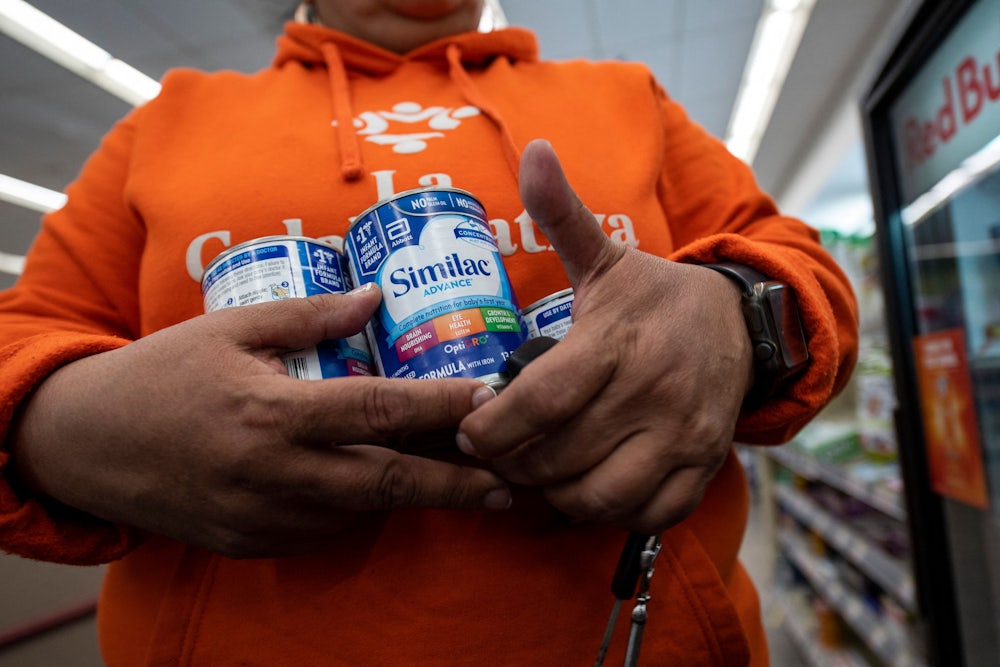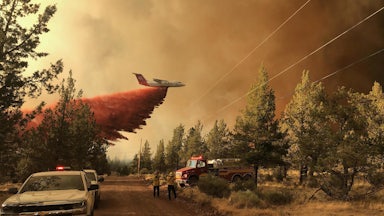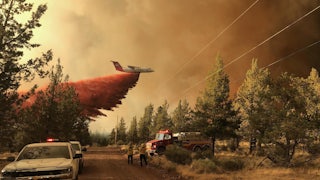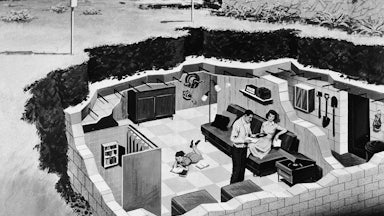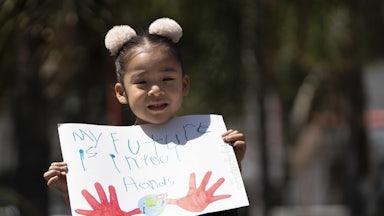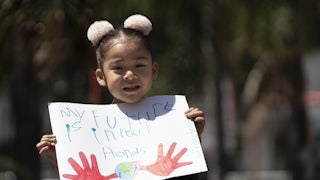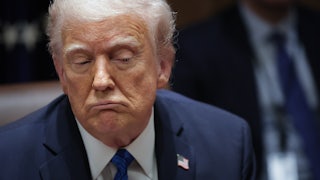Stockpiling is the meta-narrative of our Covid-altered world, an explanatory device for senseless successive crises, some real, others imagined. Americans have always “hoarded” guns and ammo. In the early stages of pandemic lockdown, they turned to “panic buying” toilet paper and “price-gouging” each other for hand sanitizer. When Russia invaded Ukraine, iodine was at the top of the apocalyptic shopping list. Often, these materials prove unnecessary, the hoarding misguided. But this is the central contradiction of our moment: a society of spectacular excess and, everywhere, a feeling of precarity.
A recent shortage of baby formula, however, is proving to be all too real—and many parents are woefully unprepared. The problem started when safety issues surfaced during inspections at a plant owned by a major supplier, Abbott Nutrition. After four babies who consumed its formulas got sick, Abbott recalled multiple product lines and temporarily shut down further production. The decision left the health of thousands of infants hanging in the balance. By late April, the nationwide out-of-stock rate for baby formula hovered around 40 percent, according to CNN. Parents searched high and low for alternatives, many of them dangerous. In mid-May, the Biden administration took steps to intervene with an import program to bring formula from Europe in hopes of bridging the gap until U.S. production returns to normal. But parents are still struggling to get their infants the proper nutrients. Already, several children have been hospitalized due to the shortage.
Coming hard on the heels of other kinds of stockpiling where hoarding was easily condemned, the formula crisis feels a bit different. The desperate parents featured in news stories and Twitter threads who spend hours searching stores throughout their state and buying up any formula they can find have, for good reason, received public sympathy. Where toilet paper hoarding felt ridiculous, and hand sanitizer price-gouging cruel, the formula shortage raises two pressing—and traditionally opposing—questions: How can the government ensure that everyone has access to basic goods and, with them, a fundamental sense of safety? And how, in the absence of such guarantees, should people prepare for the worst?
If stockpiling often seems immoral, that’s in part because an unconscionable number of people have always grappled with genuine scarcity. In 2020, while supply chain whisperers like Jeff Bezos were riding unprecedented market highs, at least 37 million Americans were living in poverty, according to the U.S. Census Bureau. But the pandemic—or, perhaps more importantly, the mainstream media’s account of the pandemic—has democratized the feeling of lack and validated a certain set of responses: “Stockpiling is a normal behavior that many people practice in preparation for a known or anticipated shortage,” Carol Mathews, a professor of psychiatry at the University of Florida, wrote in a widely circulated November 2020 op-ed. While experts agree it should be discouraged to ensure roughly equal access to essential goods, stockpiling is now deemed “natural” in the face of uncertainty. (That uncertainty is the natural state of human existence often goes unsaid.)
Legitimate responses to such hardship can feel hopelessly limited—become a survivalist or sit around waiting for the next disaster to befall you. But while doomsday “preppers” get all the attention, preparedness is for everyone, says Luis Rodriguez, a self-identified leftist prepper, known to his 3,500-odd Instagram followers as @prepperpig. That’s why Rodriguez started his account: to share practical, pro-social advice for emergency preparedness, self-defense, gardening, and more. Though nuclear fallout and solar flares capture some people’s attention, he focuses on more common chaos. “The number one calamity you’re likely to face is a house fire or an apartment fire,” Rodriguez tells me, yet, even among preppers, “I know a bunch of people that have all this gear and don’t have a fire extinguisher—or have one and haven’t checked it in five years.”
Crucially, Rodriguez also believes that preparedness isn’t only individual but communal. In 1989, when Rodriguez was 11 years old, Hurricane Hugo ripped through his South Carolina town. A tree went through his parents’ house, and neighbors had to cut them out. They were without electricity for three weeks and without water for three days. “I thought, man, I don’t want to be caught off guard like this again,” he says.
But Rodriguez remembers the experience also came with moments of uplift. As the items in everyone’s freezers were defrosting without power, the neighborhood decided to do a cookout, with barbecues as far as the eye could see. It raised important questions for a young Rodriguez: “Is my community going to have enough food? Are we going to take care of one another?” It’s this vision he takes forward with him into adulthood. “I really am driven to create a community of people who are knowledgeable and who are flexible,” he says.
While every prepper has their own philosophy—and few, if any, align on all of the finer details—it’s clear that preparedness can look less like a bunker for two and more like a mutual aid organization. Instead of running for the hills, individuals can share their time, money, and, yes, stockpiles (ideally secured before a shortage strikes) to help themselves and their neighbors meet their basic needs.
When the formula shortage hit, spontaneous communities did begin to form. Facebook groups alert members when stores restock. People are donating breast milk, both through milk banks, which test and pasteurize milk for safety, and between friends (which doctors discourage—as breast milk, like other bodily fluids, can pass on infections—yet many parents feel comfortable doing it anyway). Stephanie Kresta, a 35-year-old mother of five in Houston, is one of dozens of people who have publicly posted to Facebook offering to wet nurse for other babies, should parents face such dire need. “I’ve always had an excess of breast milk,” Kresta tells me. She’s donated her “freezer stash” of milk countless times before. While no one has yet taken her up on her offer to wet nurse, it remains open to anyone within a day’s driving distance. It would be “weird to see someone else nursing my baby,” Kresta says, imagining herself in the position of a parent seeking a wet nurse, “but if my baby was starving, it would be beautiful.”
Unfortunately, as the shortage continues, social media accounts are circulating other dubious DIY “solutions”—many of which can cause children more harm. Milk from cows, for example, may seem similar to human milk or baby formula but actually contains radically different macro- and micronutrients. Feeding cow milk to a baby under 1 year old could trigger allergies, intestinal bleeding, and stress on the kidneys. Meanwhile, watering down formula can result in electrolyte imbalances that can lead to seizures. These tragic circumstances reinforce the limits of individuals and even small collectives; when lives are on the line, quick, early, and aggressive government support for the vulnerable can be essential to survival.
Some measure of preparedness has always been useful: smoke masks on the West Coast, storm shutters on the East Coast, and potable water reserves everywhere. But in the face of globalized catastrophes, it’s clear there must also be efforts in the way of harm reduction and system-wide resiliency. If fossil fuel consumption remains high, more and more spectacular natural disasters are all but guaranteed. Climate change, then, both vindicates the prepper mindset and exposes the shortcomings of its individualist posture: Genuine preparedness requires not just having supplies on hand, but working to limit fossil fuel consumption and stop future warming.
The limits of individualism ought to be clear with the formula shortage, too. This is a crisis that policy could have prevented: In addition to encouraging parents and pediatricians to keep a few extra bottles on hand, the government should stockpile essentials like formula on our behalf, just as it currently maintains vast oil reserves. It should deliver such goods directly to parents in need, similar to the USPS Covid-19 rapid test delivery system. And it should implement changes to the current system to prevent future shortages. Since 1989, for example, a federal law has required Women, Infants, and Children programs to auction off their formula contracts, which has resulted in a single supplier dominating the market in each state—and making one company’s shutdown a nightmare for families nationwide.
Ultimately, one person’s stockpile will never be enough to compensate for systemic issues. Fortunately, this isn’t an either/or response, it’s a both/and. To keep ourselves and our communities safe, we must take back commonsense strategies from the right-wing doomsday preppers—and put the power of preparedness into everyone’s hands.
